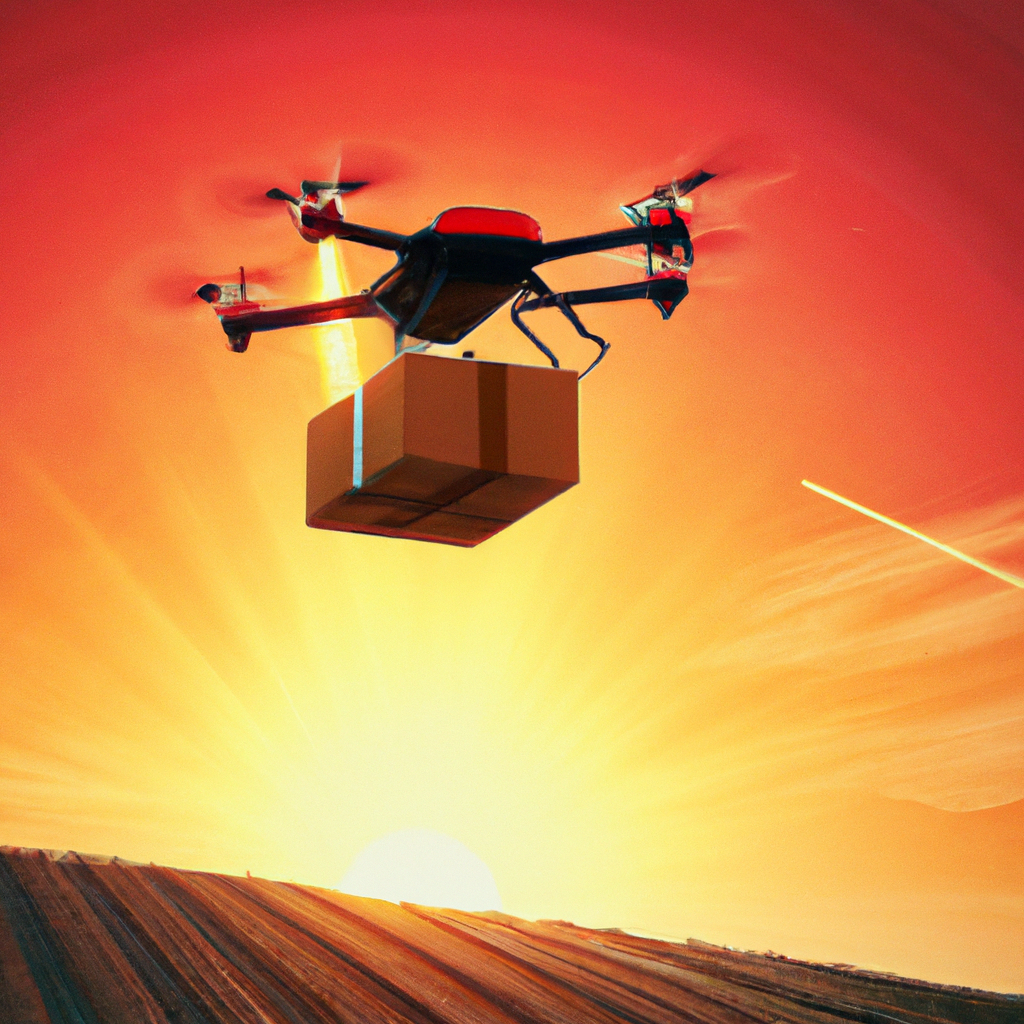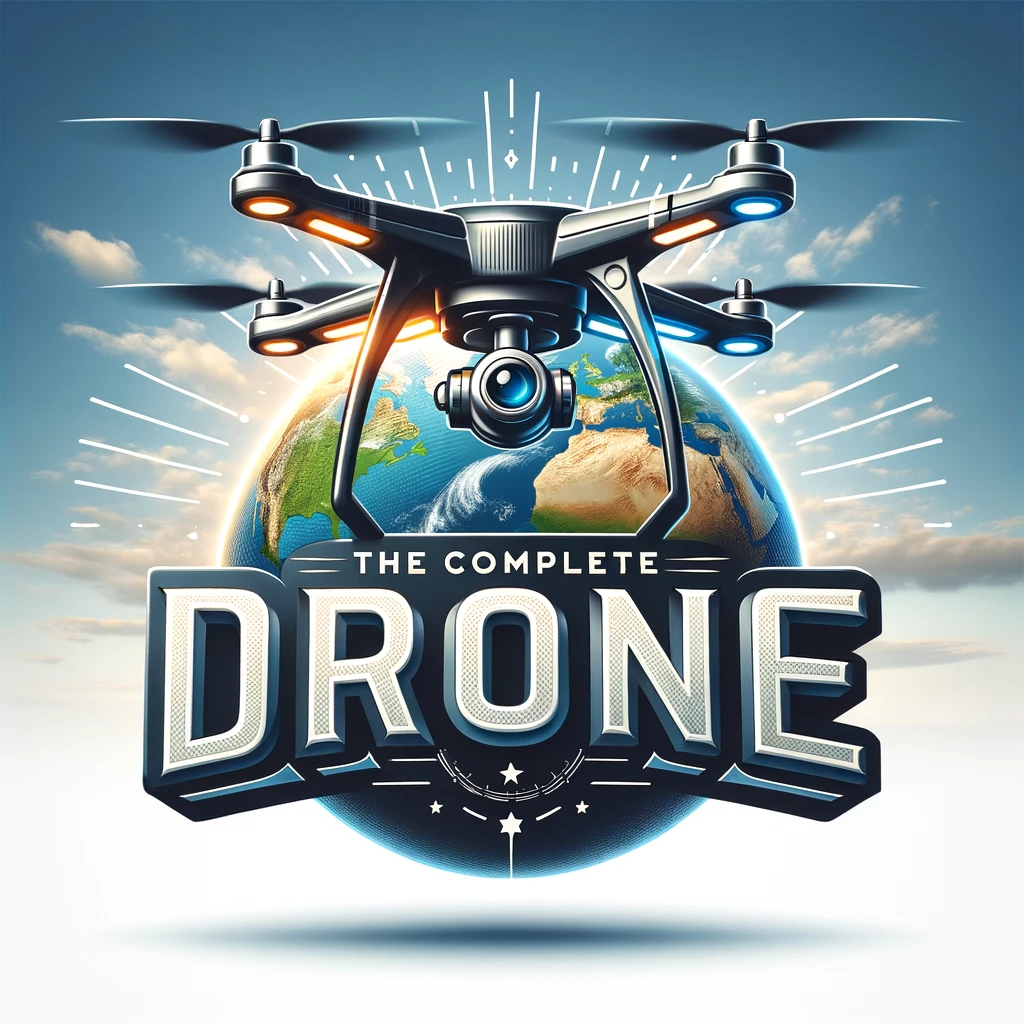Have you ever wondered if the futuristic vision of drones delivering packages right to our doorstep could actually become a reality? Well, the answer might surprise you. With advancements in technology and a growing interest in innovative solutions, the idea of using drones for package delivery is gaining traction. This article explores the potential of drone delivery, highlighting the benefits and limitations of this groundbreaking concept. So, fasten your seatbelt and get ready to soar through the possibilities of a drone-filled future.

This image is property of images.pexels.com.
Safety Concerns
Air Traffic Management
When it comes to drone delivery, one of the major safety concerns is air traffic management. With the increasing popularity of drones, it is crucial to ensure that they can safely navigate through the airspace without causing any collisions. This involves developing effective systems to monitor and regulate drone traffic, similar to how air traffic control manages manned aircraft. By carefully coordinating the routes and altitudes of drones, potential risks can be minimized, allowing for the safe and efficient delivery of packages.
Collision Risk
Another safety concern with drone delivery is the risk of collisions. Drones flying at low altitudes to deliver packages can come into contact with various obstacles such as buildings, trees, or even other drones. It is crucial to implement collision avoidance systems that use sensors and advanced algorithms to detect and avoid potential obstacles in real-time. This technology, combined with strict regulations and guidelines, can significantly reduce the risk of accidents and ensure the safety of both the drones and the people on the ground.
Interference with Emergency Services
Drone delivery operations need to consider potential interference with emergency services. During critical situations, such as natural disasters or medical emergencies, airspace may need to be cleared for the efficient operation of emergency response teams. It is essential for drone delivery companies to have protocols in place to suspend operations and clear the airspace when necessary, allowing emergency services to carry out their duties unhindered. By prioritizing public safety and cooperation with emergency services, the integration of drone delivery can be done responsibly and effectively.
Package Loss or Damage
Ensuring the safe delivery of packages is a significant concern when it comes to drone delivery. Drones may encounter adverse weather conditions or technical malfunctions that could lead to the loss or damage of packages. Companies need to invest in robust packaging solutions that can withstand various environmental factors and ensure the integrity of the package contents. Additionally, continuous monitoring of the drones and their cargo during the delivery process can help identify any issues early on and take appropriate actions to prevent package loss or damage.
Regulatory Considerations
Federal Aviation Administration (FAA) Regulations
To ensure the safe and responsible integration of drones into the national airspace, regulations set by the Federal Aviation Administration (FAA) must be followed. These regulations specify operational limitations, pilot certification requirements, and safety guidelines for drone operators. By adhering to these regulations, drone delivery companies can ensure that their operations are conducted in a manner that prioritizes public safety.
Temporary Flight Restrictions
Temporary Flight Restrictions (TFRs) are put in place by authorities during specific events or emergencies to restrict the use of airspace. Drone delivery operations must be aware of these restrictions and comply accordingly. By integrating real-time TFR data into their flight planning systems, operators can avoid restricted areas and ensure their deliveries do not interfere with other critical activities.
Remote Identification
Remote identification is a regulatory consideration that aims to ensure accountability and traceability of drones. By implementing remote identification systems, authorities can identify and track drones in real-time, which is crucial for safety and security purposes. It allows for identifying drones involved in unauthorized operations or incidents and enables enforcement agencies to take appropriate actions when necessary.
Delivery Distance and Weight Restrictions
Regulations may impose limits on the distance and weight of packages that can be delivered by drones. These restrictions are in place to ensure drones can safely carry their cargo without compromising flight stability or endangering people on the ground. By adhering to these limits, drone delivery companies can maintain operational safety and minimize risks associated with overloading or exceeding the drones’ capabilities.
Technological Challenges
Battery Life and Charging
One of the significant technological challenges in drone delivery is battery life and charging. Drones require sufficient battery capacity to complete their delivery missions within a reasonable distance. Improvements in battery technology, such as higher energy density and faster charging capabilities, are necessary to extend flight times and minimize downtime for recharging. Advances in this area will significantly enhance the efficiency and feasibility of drone delivery operations.
Weather Conditions
Weather conditions pose a constant challenge for drone operations, especially when it comes to delivery. Strong winds, heavy rain, or extreme temperatures can affect the performance and stability of drones. It is crucial for drone delivery systems to incorporate weather monitoring and decision-making algorithms that can assess weather conditions in real-time and make informed decisions regarding flight safety. By considering weather conditions, drones can avoid flying in unfavorable weather and ensure the safety of both the packages and the aircraft.
Navigational Accuracy
Precise navigational accuracy is essential for successful and efficient drone deliveries. Drones need to be able to navigate accurately, especially in crowded urban areas where obstacles are abundant. Advanced GPS systems, combined with sophisticated obstacle detection and avoidance technologies, can enable drones to navigate through complex environments and reach their delivery destinations with high precision. By continually improving navigational accuracy, drone delivery companies can optimize their operations and ensure timely and accurate package deliveries.
Secure Package Delivery
Ensuring the security of packages during the delivery process is of utmost importance. Drones need to be equipped with robust security systems to prevent unauthorized access to the cargo. This can be achieved through encrypted communication channels, tamper-proof cargo compartments, or even biometric authentication systems. By prioritizing secure package delivery, drone companies can gain the trust of both consumers and regulatory authorities and pave the way for widespread adoption of this delivery method.
Benefits of Drone Delivery
Faster Delivery Times
One of the most significant benefits of drone delivery is the potential for faster delivery times. Traditional delivery methods, such as ground transportation, are subject to various factors such as traffic congestion or limited routes. Drones, on the other hand, can take direct and more efficient routes, avoiding traffic and reaching their destinations in a fraction of the time. This increased speed can be particularly beneficial for time-sensitive deliveries, such as medical supplies or urgent packages.
Reduced Environmental Impact
Drone delivery offers the potential to reduce the environmental impact associated with traditional delivery methods. By replacing carbon-emitting vehicles with electric-powered drones, carbon emissions can be significantly reduced. Additionally, drone delivery eliminates the need for excessive packaging materials often required for long-distance ground transportation, further reducing waste and environmental footprint. This eco-friendly approach aligns with sustainability goals and contributes to a greener future.
Access to Remote Locations
Drone delivery can provide access to remote locations that may be challenging to reach through traditional means. Drones’ ability to navigate through rugged terrains or areas with limited infrastructure can bring vital supplies to remote communities or areas affected by natural disasters. By expanding delivery capabilities to these areas, drone technology can enhance accessibility and improve the quality of life for people in remote locations.
Cost-Efficiency
Drone delivery has the potential to be cost-efficient compared to traditional delivery methods. With drones, companies can optimize route planning, reduce labor costs, and eliminate the need for large fleets of delivery vehicles. This streamlined approach can lead to cost savings, which may be passed on to consumers or reinvested in further technological advancements. Ultimately, cost-efficiency benefits both businesses and consumers, making deliveries more affordable and accessible.

This image is property of images.pexels.com.
Current Drone Delivery Initiatives
Amazon Prime Air
Amazon Prime Air is one of the most prominent drone delivery initiatives. The company is working on developing a fleet of autonomous drones capable of delivering packages directly to customers’ doorsteps within a 30-minute timeframe. With ongoing testing and regulatory collaborations, Amazon Prime Air aims to revolutionize the delivery industry and provide unparalleled convenience to its customers.
UPS Flight Forward
UPS Flight Forward is another major player in the drone delivery arena. This initiative focuses on the development of a comprehensive drone delivery network to serve various industries, including healthcare and retail. By partnering with technology companies, UPS Flight Forward aims to create innovative solutions that enhance delivery efficiency and meet the evolving demands of customers and businesses.
Wing by Google
Wing, a subsidiary of Google’s parent company Alphabet, is a drone delivery initiative that aims to bring goods directly to individuals and communities. The company focuses on developing advanced delivery drones equipped with a range of safety features, such as detect-and-avoid systems and specialized delivery mechanisms. With successful pilot programs and partnerships with local businesses, Wing is actively expanding its drone delivery operations.
DHL Parcelcopter
DHL Parcelcopter is a project by DHL, one of the world’s leading logistics companies. This initiative explores the use of drones for delivering goods to remote and hard-to-reach locations. DHL Parcelcopter has conducted successful test flights in challenging terrains, such as mountainous regions, demonstrating the potential of drones in improving logistics operations in areas where traditional delivery methods face limitations.
Public Reception and Consumer Adoption
Perceptions of Drone Delivery
The public reception of drone delivery has been mixed. While some people embrace the idea of efficient and futuristic delivery methods, others have concerns about safety, privacy, and job displacement. It is crucial for companies and regulatory bodies to address these concerns through effective communication and education initiatives. By highlighting the benefits and addressing potential risks, drone delivery can gain wider acceptance and support from the public.
Privacy Concerns
Privacy concerns are one of the main issues raised regarding drone delivery. Drones equipped with cameras can potentially capture images or videos of private properties during the delivery process. It is essential for drone delivery companies to establish strict privacy protocols and regulations to prevent any unauthorized intrusion on people’s privacy. Incorporating privacy features such as visual and audio indicators on the drones can also help address these concerns and ensure compliance with privacy standards.
Trust in Automated Systems
Drone delivery relies heavily on automated systems that navigate and operate the drones. Building trust in these automated systems is crucial for wider consumer adoption. Companies need to demonstrate the reliability, accuracy, and safety of their automated processes through extensive testing and transparent reporting. By establishing trust and showcasing the benefits of automation, consumers can gain confidence in the technology and embrace drone delivery as a viable option.
Consumer Preferences
Consumer preferences play a significant role in the adoption of drone delivery. Companies need to understand and cater to the specific needs and expectations of their target consumers. Factors such as delivery speed, tracking capabilities, and convenience are crucial considerations. By continuously improving the overall customer experience through efficient operations and personalized services, drone delivery can become a preferred choice for many consumers.

This image is property of images.pexels.com.
Competing Technologies
Autonomous Ground Vehicles
Autonomous ground vehicles, such as delivery robots or self-driving vans, compete with drone delivery in terms of efficiency and convenience. These vehicles are capable of navigating urban environments and delivering packages directly to customers’ doorsteps. As technology advances, both autonomous ground vehicles and drones will continue to evolve, and their competition will drive innovation in the delivery industry.
Underground Delivery Systems
Underground delivery systems, such as pneumatic tubes or underground tunnels, provide an alternative to traditional delivery methods and drones. These systems allow for quick and efficient transportation of goods underground, reducing congestion on the surface. Underground delivery systems are particularly useful in densely populated areas or locations with limited above-ground space. While they may not be suitable for all delivery scenarios, they offer a unique solution to certain logistical challenges.
Hyperloop Transportation
Hyperloop transportation technology, with its high-speed capsules traveling through near-vacuum tubes, has the potential to revolutionize transportation and logistics. While primarily designed for intercity passenger travel, hyperloop systems could also be adapted for freight transportation. By leveraging the speed and efficiency of hyperloop technology, packages could be transported over long distances in a fraction of the time required by traditional methods.
Traditional Delivery Methods
Traditional delivery methods, such as postal services or courier companies, continue to be the backbone of the logistics industry. These well-established methods have extensive networks, experience, and infrastructure in place. While they may face challenges in terms of speed or environmental impact, they still play a significant role in last-mile delivery and serving areas where drone or other emerging technologies are not yet fully implemented.
Future Developments in Drone Technology
Swarm Delivery Systems
Swarm delivery systems involve a coordinated network of multiple drones working together to deliver packages. This concept offers the potential to enhance delivery efficiency, increase payload capacity, and overcome limitations related to individual drone range and battery life. By leveraging swarm technology, companies can optimize delivery routes, distribute the workload among drones, and ensure a resilient and efficient delivery ecosystem.
Advanced Navigation Systems
Advancements in navigation systems will play a crucial role in the future of drone delivery. Improved GPS technology, accurate obstacle detection, and advanced mapping algorithms will enable drones to navigate even more complex environments with higher precision. These advancements will minimize delivery errors, enhance safety, and make drone delivery a reliable and scalable solution.
Integration of AI and Machine Learning
The integration of artificial intelligence (AI) and machine learning algorithms into drone systems will unlock new capabilities and enhance overall performance. AI-powered drones can analyze data in real-time, optimize delivery routes, and make informed decisions based on environmental conditions. Machine learning algorithms can train drones to improve their flight stability, energy efficiency, and obstacle avoidance skills. By harnessing the power of AI and machine learning, drone delivery can continuously evolve and adapt to new challenges.
Beyond Visual Line of Sight (BVLOS) Operations
The ability to conduct operations beyond visual line of sight (BVLOS) is crucial for the future development of drone delivery. Currently, most drone deliveries are limited to short distances and require the operator to maintain visual contact with the aircraft. However, BVLOS operations would allow drones to travel longer distances and operate autonomously, increasing the delivery range and unlocking new possibilities. Regulatory advancements and technological innovations are needed to enable safe and widespread BVLOS operations for drone delivery.

Conclusion
Drone delivery has the potential to transform the way packages are delivered, providing faster, more eco-friendly, and efficient solutions. While safety concerns, regulatory considerations, and technological challenges need to be addressed, the benefits of drone delivery, including faster delivery times, reduced environmental impact, access to remote locations, and cost-efficiency, make it a promising option for the future. With ongoing initiatives led by companies like Amazon Prime Air, UPS Flight Forward, Wing by Google, and DHL Parcelcopter, drone delivery is becoming a reality. As public reception and consumer adoption continue to evolve, it is crucial to address privacy concerns, build trust in automated systems, and cater to consumer preferences. Additionally, competing technologies such as autonomous ground vehicles, underground delivery systems, and hyperloop transportation continue to shape the future of the delivery industry. The future developments in drone technology, including swarm delivery systems, advanced navigation systems, AI integration, and BVLOS operations, hold immense potential for further revolutionizing drone delivery. As technology advances and regulations evolve, drone delivery is poised to become a mainstream and preferred method of package delivery, benefiting both businesses and consumers.

